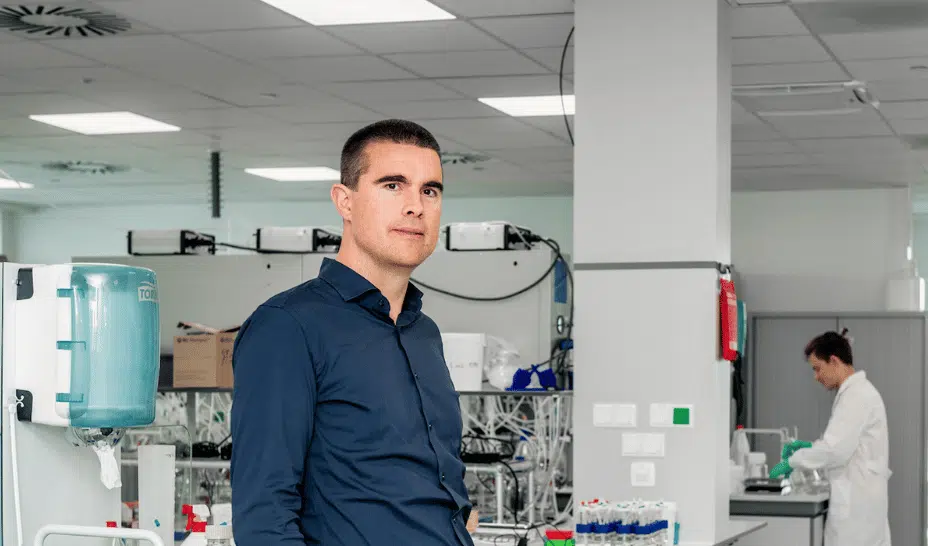Building a protein killer app with the synthetic biology wheel
Building a protein killer app with the synthetic biology wheel
DNA is the blueprint of life, but proteins are the workhorses that carry out DNA’s instructions to make life happen. If it weren’t for protein, DNA would be a meaningless string of functionless information.Our bodies work the way they do because of the function and activity of about a million specialized proteins. But the proteins that keep us alive and functioning as breathing, eating, living beings aren’t even the tip of the iceberg when it comes to what proteins can do. Companies and researchers are developing proteins to create the next generation of lightweight aircraft, enhance food ingredients, make manufacturing processes more sustainable, and improve the delivery of genetic material for gene editing.Engineering proteins could also help us detect diseases sooner, develop treatments for currently untreatable conditions, and make new high-value materials, among many other potential applications. Essentially, protein has the potential to be synthetic biology’s killer app -- so necessary and so desirable that it proves the core value of synthetic biology as the group of technologies to make our world healthier and more sustainable.
Engineering synthetic biology’s killer app
But finding the right protein for the application you want to develop isn’t so simple, and is probably a job that would leave you wishing you were searching for a needle in a haystack. Why? Proteins are defined by amino acid sequences and for the average-size protein, there are more possible combinations of unique amino acid sequences than there are stars in the visible universe.Even though the protein you need to do the job you want done might exist in nature, you’ll probably never find it. Engineering the protein you need is a much better approach, but that doesn’t make it an easy solution by any means. There are a number of amino acid combinations that could produce a protein that performs your desired function, so you need to find the best one. Perhaps you could even optimize it further. Then, you must also confirm its function and performance. And you might have to do this multiple times before you get the best protein you can get for the job you want it to do.This is a daunting set of tasks, to be sure, requiring expertise in a number of different niches for successful completion, from biochemistry to automation to bioinformatics. Each of these areas can be neatly placed into a single layer in the synthetic biology stack, the synthetic biology world’s analogy to the tech stack. Experts in each niche layer of the stack optimize their products without worrying about the need to design or implement other layers of the stack outside their range of knowledge. Different layers --each of which has been refined and optimized -- can then be stacked, working together to get research done much quicker than ever before.But when it comes to engineering proteins for novel functions, this approach may not be the best solution. In fact, it may be faster to combine layers under one roof, providing researchers and entrepreneurs a veritable value chain from a single source. Codexis’ CodeEvolver® Platform is a good example of this type of solution.
A synthetic biology wheel for enhanced protein engineering
The CodeEvolver® process begins with in silico modelling and computational design of the starter protein -- from nature, Codexis’ libraries, or designed de novo -- using proprietary algorithms and a team of bioinformatics experts. Resulting “smart sequence” variants most likely to deliver improved performance and stability are then expressed in high-throughput, so that using advanced tools and automation, their actual performance can be tested and the best variant for the desired activity identified. The variants are also sequenced, so that protein function can be linked to DNA sequence, building a proprietary, in-house database linking protein structure, function, and sequence.What comes next is the crux of the CodeEvolver® platform. The data are analyzed with in-house proprietary algorithms to guide future protein design -- making the first step in the process faster and smarter as more and more data are added. Essentially, the CodeEvolver® technology epitomizes the synthetic biology “wheel” rather than the synthetic biology stack -- a value chain of layers for customers that feeds back into itself, improving with each iteration.“Every project we undertake allows us to understand a bit more how protein performance is altered and enhanced by adjustments to protein structure,” says Codexis CEO John Nicols. “Ultimately, our CodeEvolver® platform will have generated so much intelligence and understanding that we will have to do very little high-throughput testing in physical reality. Utilizing artificial intelligence, we will be able to accurately predict which structural changes to make to create the protein performance we are working to achieve for a given application.”

The CodeEvolver® process creates tailored engineered proteins by AI-driven optimization and automated testing of protein variants. Image credit: Codexis
An enzyme cascade success story
The CodeEvolver® technology can revolutionize protein engineering for a number of applications, from biotherapeutics to pharma. But one of the biggest success stories comes from the world of food ingredients -- specifically, zero calorie sweeteners.Market demand for zero-calorie sweeteners remains high as new evidence vilifying sugar surfaces regularly. But zero calorie sweeteners, such as first-generation Stevia products, which are mostly comprised of a component called Reb A, suffer from taste profiles that aren’t close enough to that of sugar -- and are even a bit bitter. The good news is that Reb A can be enzymatically converted, via an intermediate called Reb D, to another molecule called Reb M, which tastes more like sugar.But Reb M is an extremely small component of the stevia leaf extract, limiting supply. And traditional industrial fermentation approaches to producing Reb M are expensive, suffer from off-targets and contamination risk, and simply take a long time to scale. But enzyme cascades -- series of enzymes in which the product of one enzyme is the substrate for the next -- have rapid development timelines, are less prone to contamination, and are less expensive. Identifying a bioindustrial process ripe for innovation, British food and beverage ingredients supplier Tate & Lyle decided to use an enzyme cascade to produce Reb M -- and lots of it.Through a partnership with Codexis, which had already done some work optimizing the RebM enzyme cascade, they ended up with a highly productive enzyme cascade yielding >95% Reb M. Through the CodeEvolver® platform, greater than 200,0000 enzyme variants were produced and tested for optimal titer, yield, and cofactor recycling. The final variants -- each of which has around 100 mutations -- are much more active, selective, and temperature stable than the natural enzymes. Critically, variants for each enzyme were tested in tandem -- there was no need to optimize one prior to optimizing the other -- facilitating the quick turnaround time to a functional enzyme cascade.

Tate & Lyle’s enzyme cascade process to Reb M production was optimized using CodeEvolver®. Image credit: Codexis.
This was a big win for Tate & Lyle. Michael Harrison, Tate and Lyle’s CTO, says, “We view Codexis as an extension of our internal research and development programs at Tate & Lyle and are excited about the opportunities which this partnership brings to deliver new and innovative food ingredients to the market.”The Reb M success story is only one small part of the future of protein engineering. In 2018 alone, over 500,000 protein variants were designed, produced, and performance tested using Codexis’ CodeEvolver® technology. Improved protein engineering is no longer a future goal, but an immediate reality. Perhaps protein is already synthetic biology’s killer app.



.svg)










-min.png)

.gif)